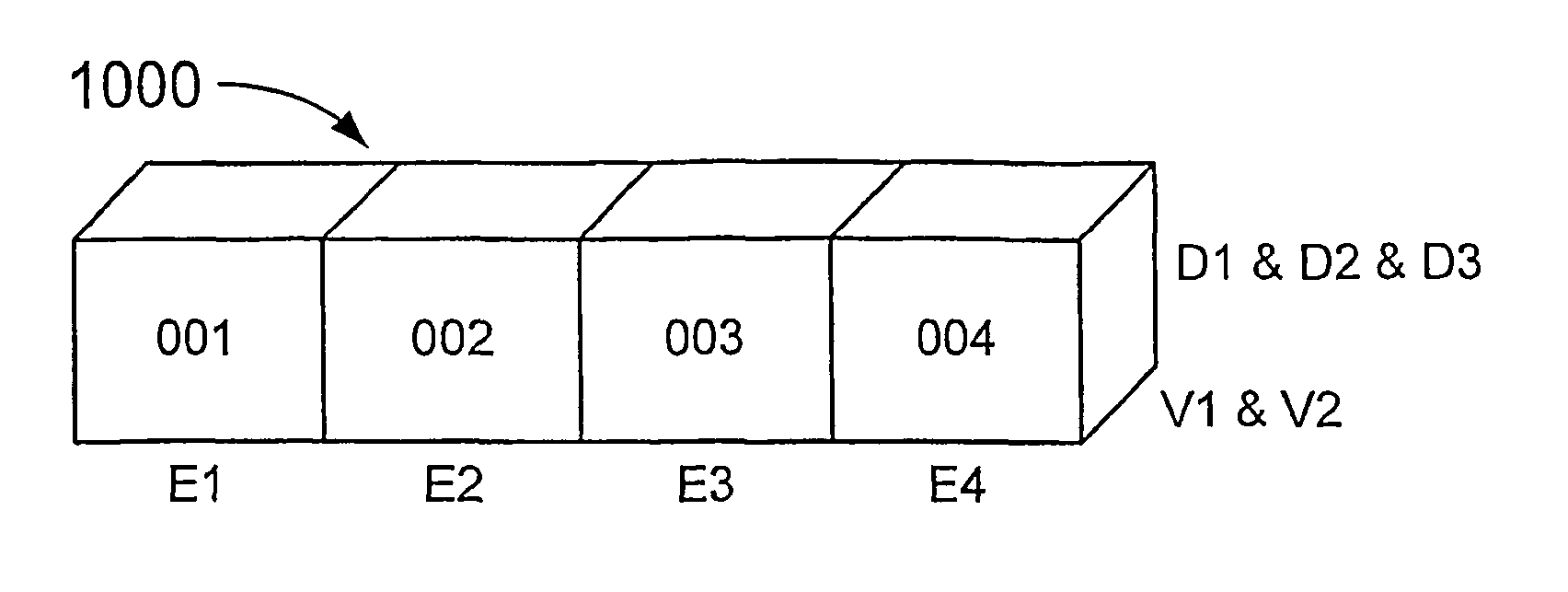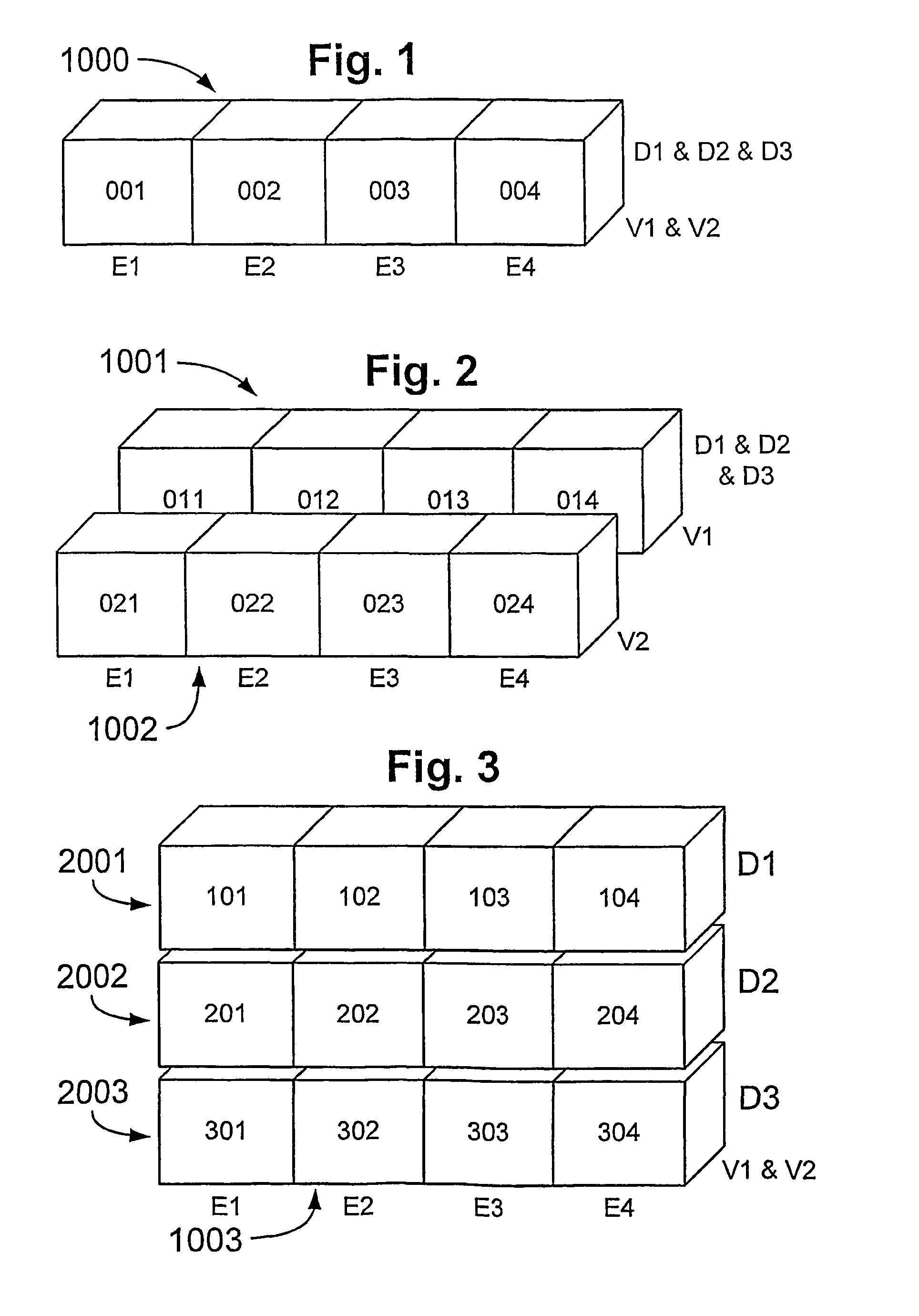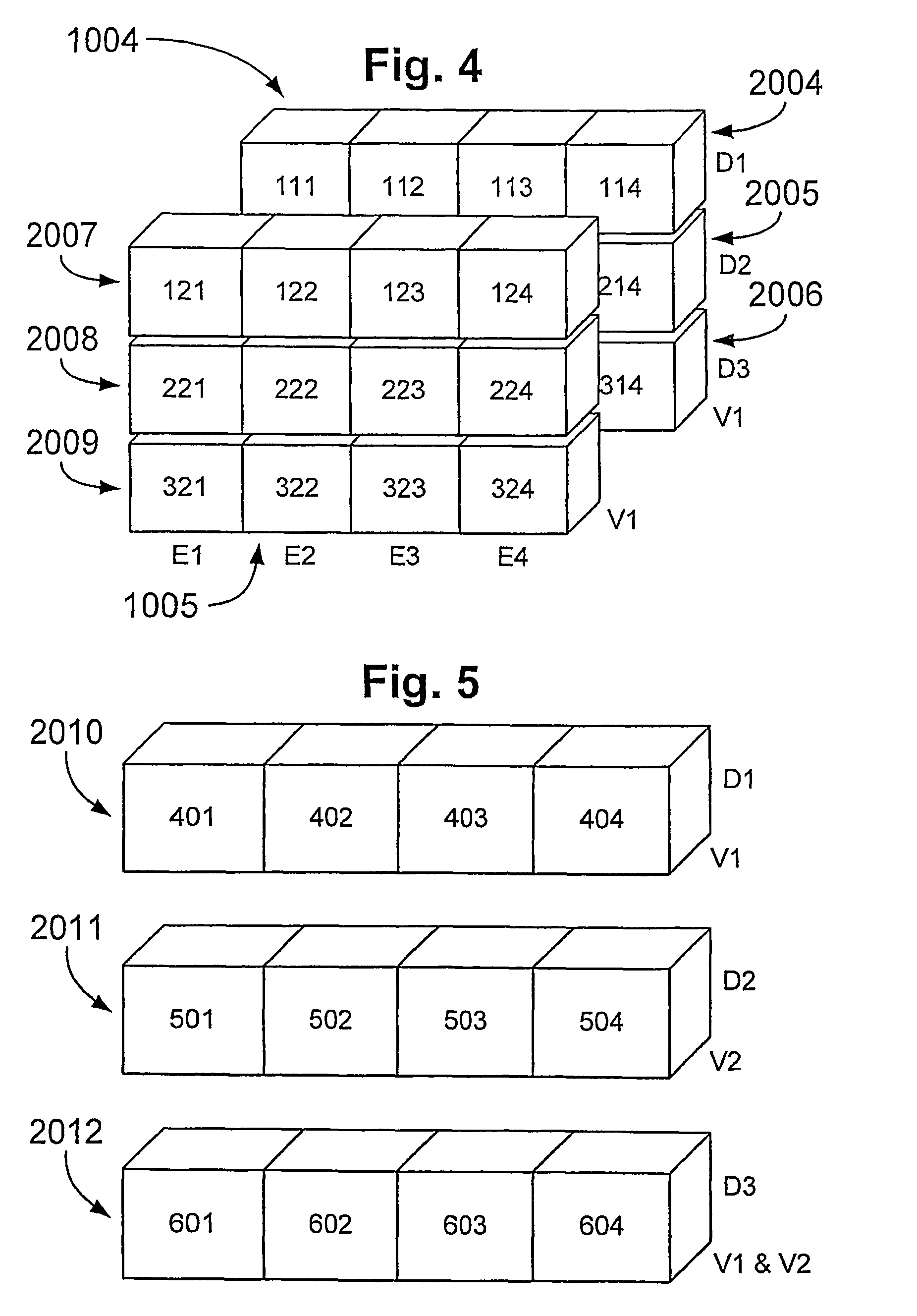System and method for prediction of deterioration
a technology of system and method, applied in the field of system and method for prediction of deterioration, can solve the problems of not being able to predict the corrosion rate, not being able to estimate the extent of corrosion, and needing to manufacture units, so as to improve the prediction of the rate of deterioration and/or lifetime of process equipment, and improve the effect of purchasing decisions
- Summary
- Abstract
- Description
- Claims
- Application Information
AI Technical Summary
Benefits of technology
Problems solved by technology
Method used
Image
Examples
Embodiment Construction
[0074]In FIG. 1, a group 1000 of four example rate models (001, 002, 003 and 004) are illustrated, in which each rate model is used to predict the deterioration of an item of process equipment (E1, E2, E3 or E4) by three different deterioration mechanisms (D1, D2 and D3) from the values of two feedstock property variables (V1 and V2).
[0075]In FIG. 2, two groups 1001 and 1002 of four example rate models are illustrated, one group 1001 comprising rate models 011, 012, 013 and 014, the other group 1002 comprising rate models 021, 022, 023 and 024. Each model is used to predict the deterioration rate for an item of process equipment (E1, E2, E3 or E4) by three different deterioration mechanisms (D1, D2 and D3) from the value of one feedstock property variable (V1 or V2).
[0076]In FIG. 3, a group 1003 of three sets 2001, 2002 and 2003 of example rate models is illustrated, one set 2001 comprising rate models 101, 102, 103 and 104, the second set 2002 comprising 201, 202, 203 and 204, and ...
PUM
 Login to View More
Login to View More Abstract
Description
Claims
Application Information
 Login to View More
Login to View More - R&D
- Intellectual Property
- Life Sciences
- Materials
- Tech Scout
- Unparalleled Data Quality
- Higher Quality Content
- 60% Fewer Hallucinations
Browse by: Latest US Patents, China's latest patents, Technical Efficacy Thesaurus, Application Domain, Technology Topic, Popular Technical Reports.
© 2025 PatSnap. All rights reserved.Legal|Privacy policy|Modern Slavery Act Transparency Statement|Sitemap|About US| Contact US: help@patsnap.com



